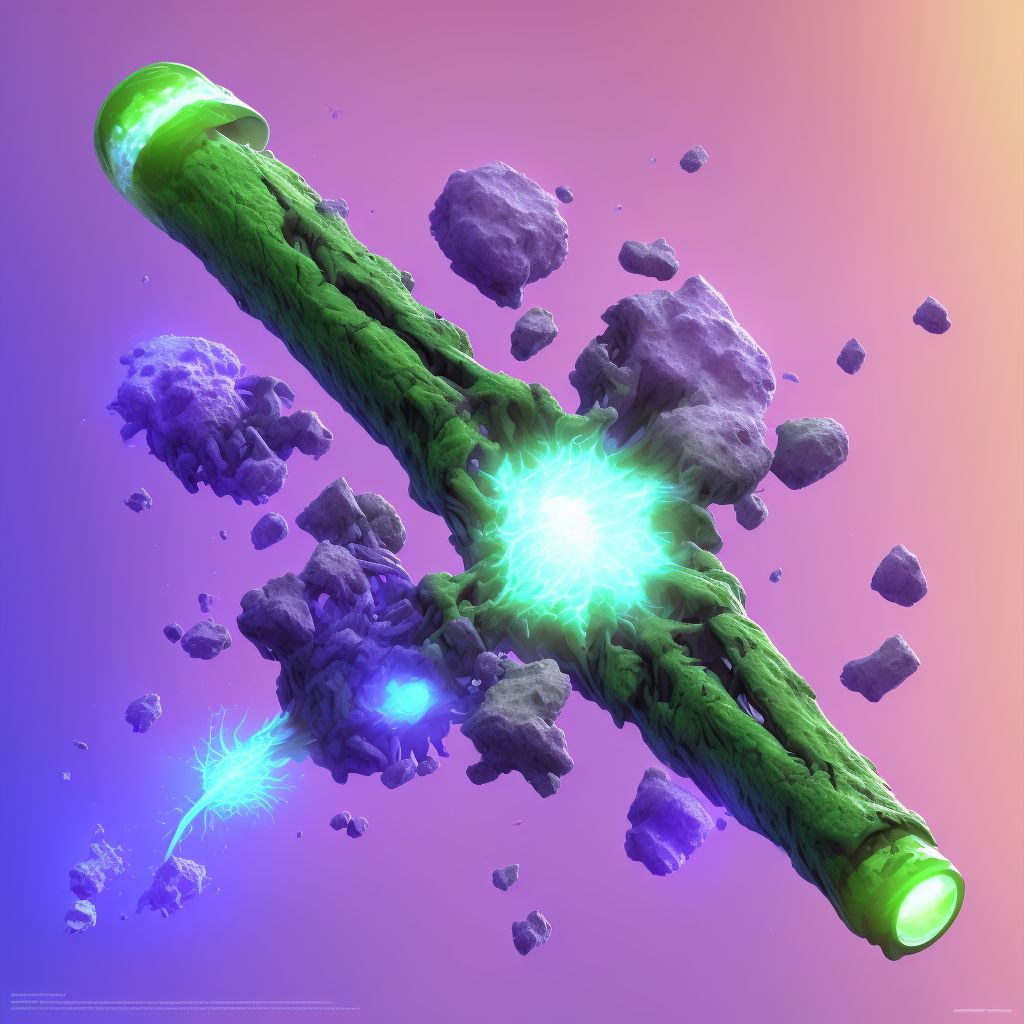
Nondisplaced segmental fracture of shaft of right tibia, subsequent encounter for open fracture type I or II with routine healing Save
ICD-10 code: S82.264E
Disease category: S82.264: Nondisplaced segmental fracture of shaft of right tibia
Nondisplaced Segmental Fracture of the Shaft of Right Tibia: Understanding Open Fracture Type I or II with Routine Healing
When it comes to bone fractures, the nondisplaced segmental fracture of the shaft of the right tibia is a condition that requires attention and care. In this subsequent encounter, we will delve into open fracture types I or II and their routine healing process. Let's explore this topic further.
An open fracture refers to a broken bone that protrudes through the skin, exposing the fracture site to potential infection. Open fractures are categorized into different types based on the severity of soft tissue injury, with type I or II indicating minimal injury to the surrounding tissues.
- Definition: A nondisplaced segmental fracture of the shaft of the right tibia refers to a broken bone in the middle portion of the shinbone, without any significant misalignment.
- Causes: This type of fracture is commonly caused by trauma or excessive force applied to the tibia, such as during sports activities or accidents.
- Symptoms: Patients with this fracture may experience pain, swelling, tenderness, and difficulty bearing weight on the affected leg. However, the bone fragments remain relatively well-aligned, minimizing the risk of complications.
- Diagnosis: To diagnose a nondisplaced segmental fracture of the shaft of the right tibia, medical professionals will typically perform a physical examination, review the patient's medical history, and request imaging tests like X-rays or CT scans.
- Healing Process: Routine healing for open fractures type I or II involves several stages. Initially, the fractured bone undergoes an inflammatory response, followed by the formation of a soft callus. Over time, this callus gradually transforms into a hard callus, providing stability and support to the healing bone. Finally, the hard callus remodels, restoring the bone's original structure.
It is important to note that treatment options for this type of fracture may vary depending on individual circumstances. Consulting a healthcare professional is crucial to determine the appropriate course of action.
In conclusion, a nondisplaced segmental fracture of the shaft of the right tibia is a condition that requires careful attention. Understanding the nature of open fractures type I or II and their routine healing process can provide valuable insights into the recovery journey. If you suspect you have sustained this type of fracture, seek medical attention promptly to ensure proper diagnosis and treatment.
Treatment of Nondisplaced segmental fracture of shaft of right tibia, subsequent encounter for open fracture type I or II with routine healing:
Treatment Options for Nondisplaced Segmental Fracture of Shaft of Right Tibia
A nondisplaced segmental fracture of the shaft of the right tibia is a specific type of fracture that requires proper treatment for optimal healing. This subsequent encounter for an open fracture type I or II with routine healing necessitates appropriate care plans to ensure the patient's recovery. Here a...
To see full information about treatment please Sign up or Log in